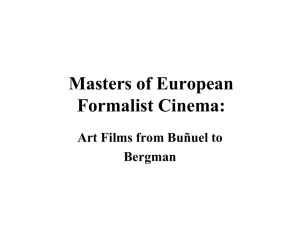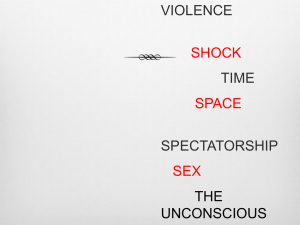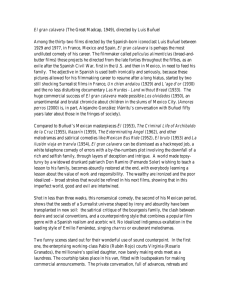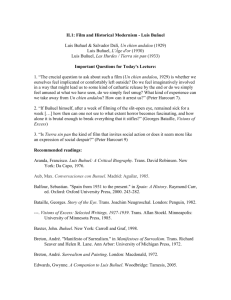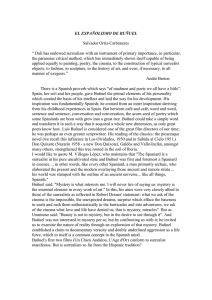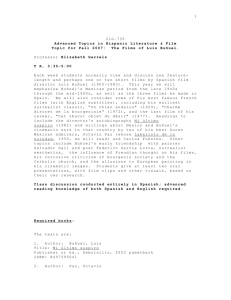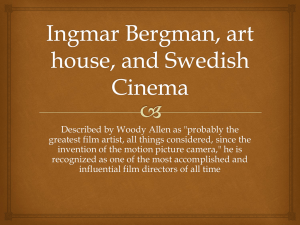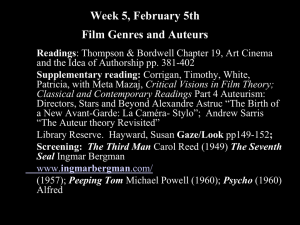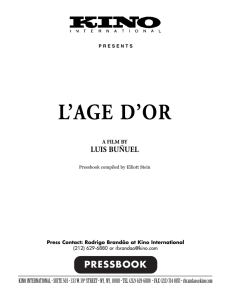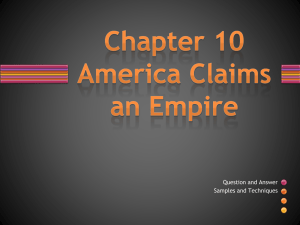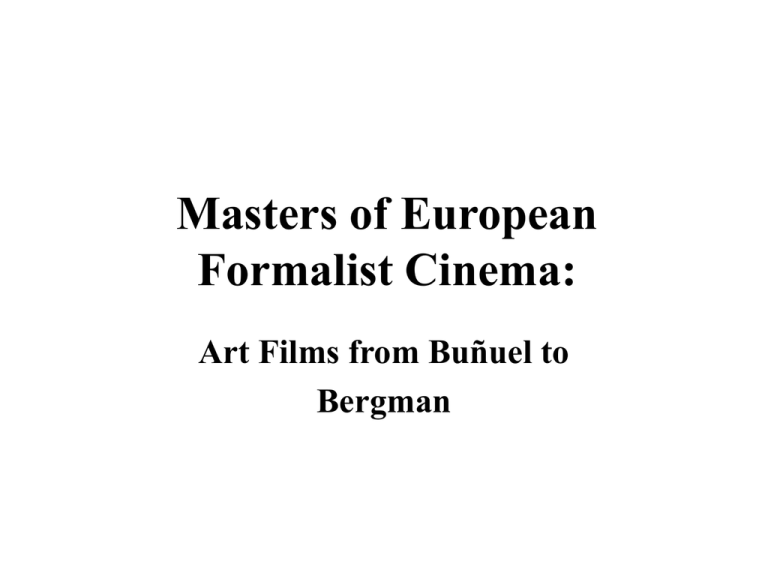
Masters of European
Formalist Cinema:
Art Films from Buñuel to
Bergman
・Luis Buñuel (1900-1983 Spanish/Mexican)
・Ingmar Bergman (1918-2007 Sweden)
・Federico Fellini (1920-1993 Italy)
・Michelangelo Antonioni (1912-2007 Italy)
・Robert Bresson (1901-1999 France)
・Jacques Tati (1908-1982 France)
Luis Buñuel
• Luis Buñuel - friend of
Salvatore Dali and
Federico Garcia Lorca
• Founded film club in
Madrid and wrote film
reviews
• Entered film producing
circles in Paris and made
his first film Un Chien
Andalou in 1928
• Film of instinct, Freudian
and Surrealistic
Luis Buñuel’s Surrealism
• Left Spain after fighting in the Spanish Civil War.
Found difficult to get work in US, he settled in
Mexico. Returning to Europe after the war, he
made a series of films attacking the hypocrisy of
the bourgeoisie and the church.
• The Discreet Charm of Bourgeoisie (1972)
Luis Buñuel’s
Surrealism
• Written by Luis Buñuel and Jean-Claude Carrière,
and directed by Buñuel, the film is a satire about a
group of bourgeois friends trying to have dinners
together.
• Surrealistic images; Surrealistic occurring (episodes)
• Story within story; dream within dream
Luis Buñuel’s
Surrealism
• Dream (surrealistic) elements - satire of
bourgeois manners, concerns, preoccupations and
hypocrisy.
• One lunch is postponed as the host and hostess
have a sex outdoors - not because they cannot
control their urge but suppressing it they admit
they have it
Luis Buñuel’s
Surrealism
• In one failed dinner party, the group of middle
class diners are seen on stage but one of them,
Henri, is unable to memorize his lines.
• Fear of humiliation in front of the public.
Luis Buñuel’s
Surrealism
• In one dream, the South American ambassador of
a fictional country shoots his host for insulting his
country. He does so not because the insult is
untrue but you do not say such things in public.
• Absurdity of pride, public manners, and etiquette
Federico Fellini
• Fellini is the most original
and independent film
director with the most
distinctive film style.
• Helped inaugurate
Neorealismo as a
screenwriter but developed
his own distinctive cinema
style when he became a
director.
Dreams in Federico Fellini
Recurring motifs and themes
• Circus, festivals, music halls, parades, marches
• Clowns, angelic figures, holy fools
Dreams in Federico Fellini
• Whores, nurturing mother figures, large women
Dreams in Federico Fellini
• Childhood and young adulthood memories
and recollections
Dreams in Federico Fellini
• Mesmerizing images since his childhood
Dreams in Federico Fellini
• Empty seashores, desolate roads, deserted
town squares at night
Dreams in Federico Fellini
• Characters at their most bizarre
Dreams in Federico Fellini
• Hallucinatory or dreamlike imagery
• Jungian realization that his ‘extrasensory’
perceptions are the psychic manifestation of the
unconscious
• Oneiric
8 1/2 (1963)
Magic of Ingmar Bergman
• Bergman’s films are noted for
the bleak depiction of human
vulnerability, loneliness and
torment.
• Several stages of Bergman’s
directorial career.
• Psychological tension,
religious anguish, sexual guilt,
and other spiritual torment are
presented through oneric and
magical images.
Ingmar Bergman
• Wild Strawberries (1957) - meditation of old age
and the regret and guilt of adolescence
Ingmar Bergman
• Study of narcissistic but confused and alienated
characters Persona (1966)

